90 Minutes with the Clevo W740SU, Featuring Iris Pro HD 5200
by Ian Cutress on July 29, 2013 7:00 AM EST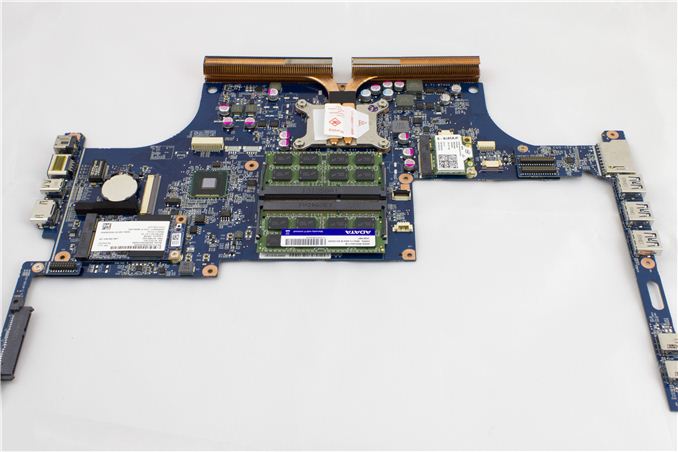
A couple of weeks ago I attended a press event for the Intel Experience tour in London, hosted by Intel UK. Aside from the usual array of Ivy Bridge mobile parts were a couple of Haswell laptops – the Sony Vaio Pro, featuring the i5-4200U (GT2. HD4400), and the Clevo W740SU, the first laptop to market featuring Iris Pro HD 5200, aka Crystal Well/GT3e. I asked for an opportunity to get my hands on the machine, and hopefully benchmark it. Our good friends at Intel UK organized a tour of their facility in Swindon, an interview with the site manager Rod O'Shea, and some 90 minutes of testing with the Clevo – here are my results with the i7-4750HQ CPU contained within.
Anand has already had the opportunity to cover the i7-4950HQ, the top mobile SKU with GT3e graphics, in his comprehensive testing of the Intel CRB system. The first machine we believe to enter the market with anything similar is the Clevo W740SU, featuring the i7-4750HQ, which is a small departure from the Clevo norm. The basic Clevo system is typically modular, where everything is able to be changed in and out depending on the customer requirements. Moving to Iris Pro results in a BGA CPU, and thus the CPU is locked into the build from the beginning. This has a couple of positive effects, such as designing the chassis for a specific CPU allows the design to be refined, although it still takes away from that modular feel.
The first couple of vendors for this laptop, as far as well can tell, seem to be System76 in Colorado and Schenker in Germany, featuring the same basic setup:
Intel Core i7-4750HQ (Quad Core w/HT)
14.1" 1080p Full High Definition LED Backlit IPS Display
Intel Iris Pro Graphics 5200 with 128 MB eDRAM
Up to 16 GB 204 pin Dual Channel DDR3 @ 1600 MHz
1 x mSATA, 1 x 2.5" 9mm Removable SATA II/III
Multitouch Clickpad with two finger scrolling
Gigabit LAN (10/100/1000), WiFi
Intel Centrino, or optional Killer™ Atheros 802.11n
HDMI, Display Port, Ethernet, 3 x USB 3.0, Headphone Jack, Microphone Jack, SD Reader
Built-In 1.0 MP High Definition Webcam
53.28 Wh 6 Cell Smart Lithium-Ion
13.26" x 9.90" x 0.75" (WxDxH)
3.80 lbs. (1.72 kg.)
At 1.72kg it is not the lightest laptop by comparison, but 1080p at 14” does hit that mid-point between a 13” super-portable and 15” desktop replacement. With a HD 5200 it should cover a lot of integrated graphics performance as Anand alluded to, especially with the eDRAM in tow. For reference, in Cloud Gate IGP, we scored the same graphics score with a 4750HQ at 1350 MHz graphics core as an i7-4770K (GT2) at 6 GHz and 1850 MHz graphics core (under liquid nitrogen). The 52.38WH battery has me a little concerned – it will be interesting to see how much real-world battery life this affords.
The unit I had to test featured an Intel 525 240 GB SSD and 2 x 4GB DDR3L-1600 memory, and in my 90 minutes of testing I managed to go through most of my normal CPU benchmarking suite. For a comparison point, I also tested an i7-4770K at the same speed as the 4750HQ, with similar memory settings. This is the nearest we could get to a desktop comparison processor – the quad core mobile Haswell parts have 6 MB L3 cache, compared to the 8 MB L3 cache of the 4770K. This means that in memory accesses, if the benchmark needs 8 MB L3, the 4770K will be faster even through the 4750HQ is moving out to the eDRAM because the eDRAM is slower than L3.
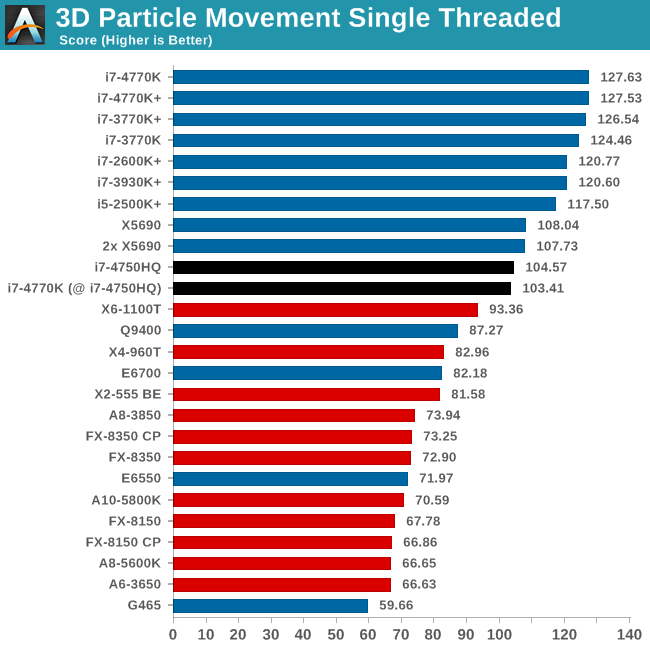
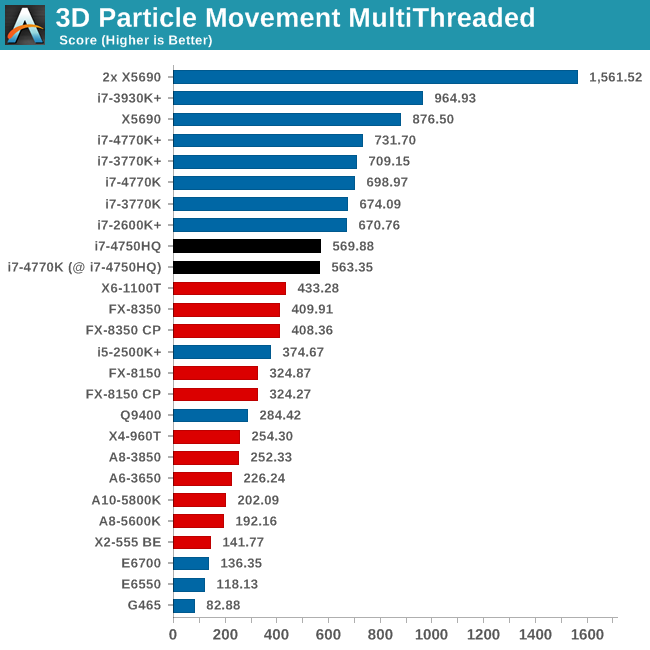
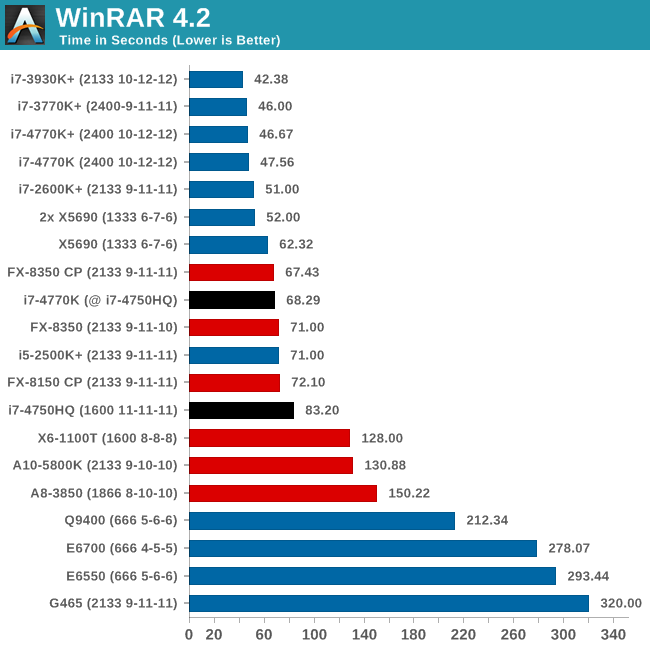

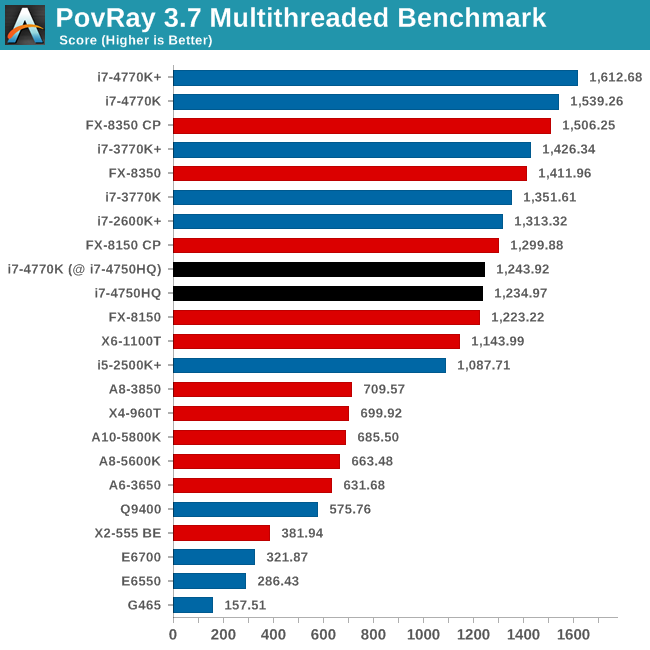
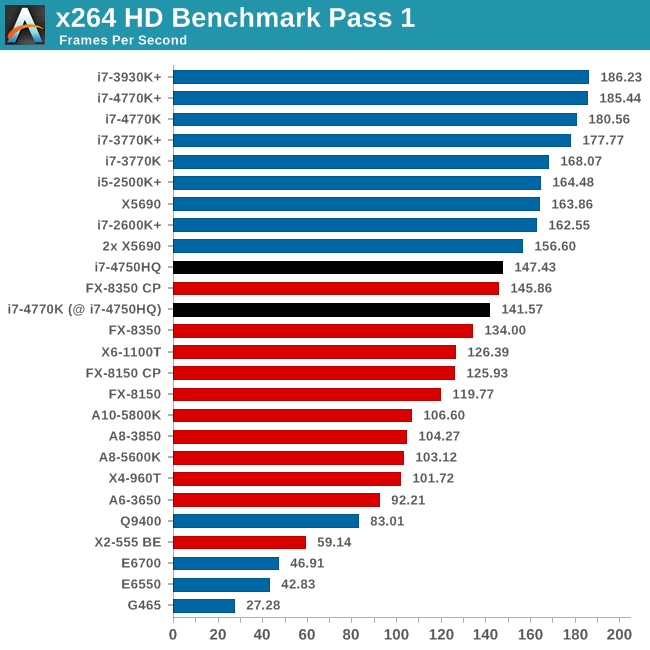
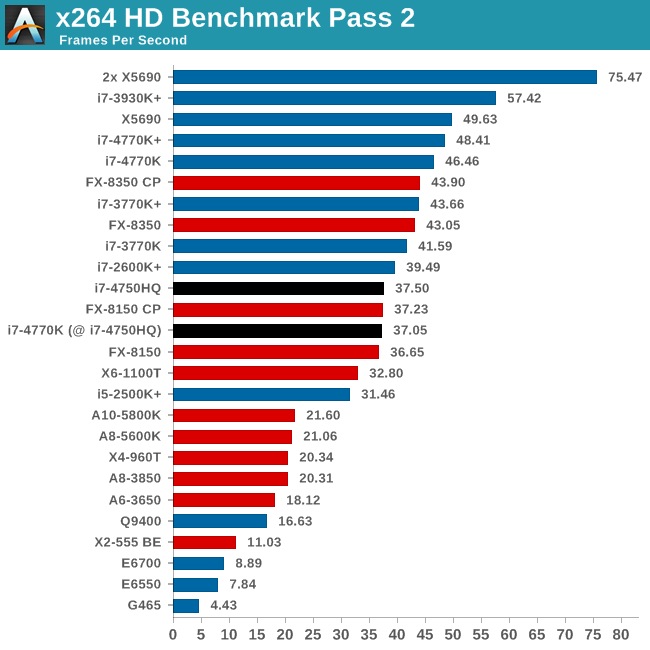
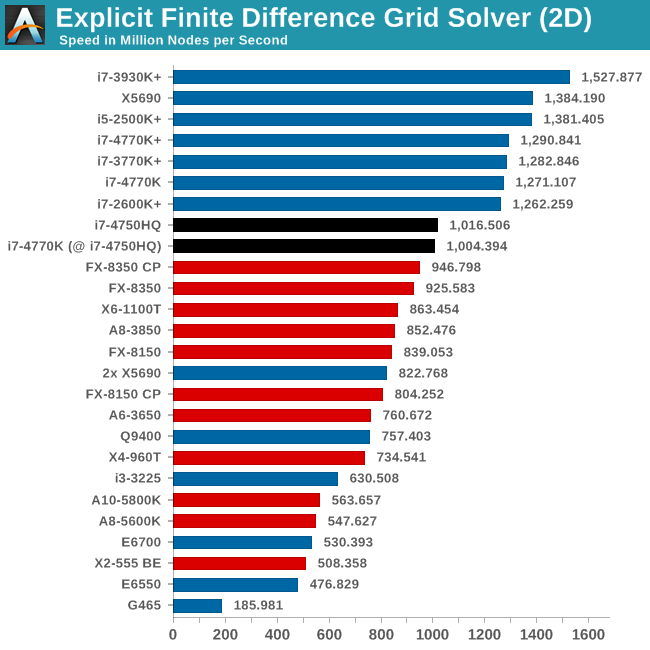
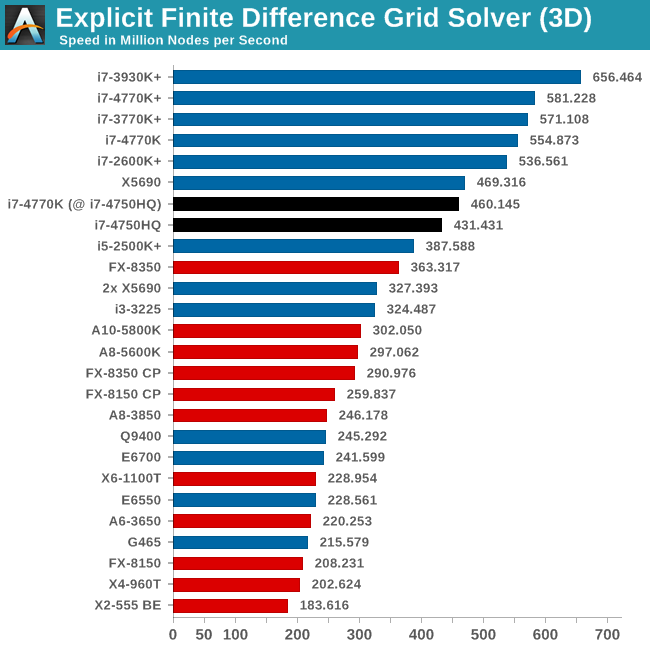
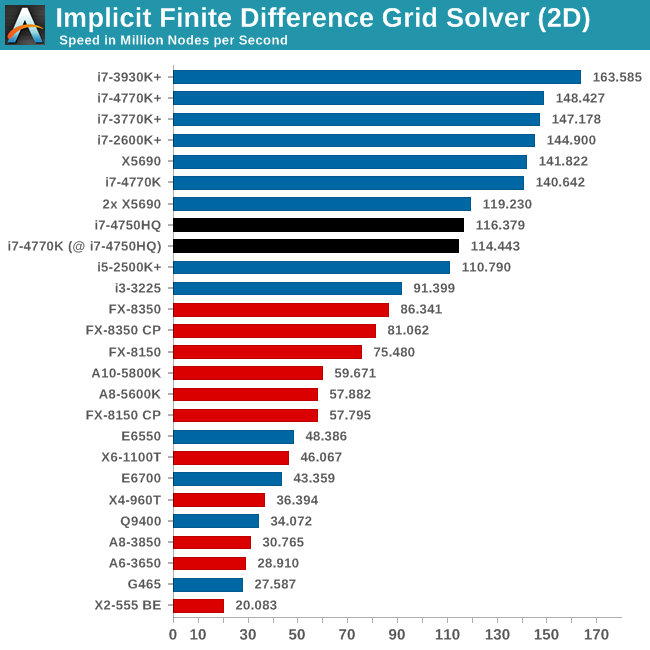
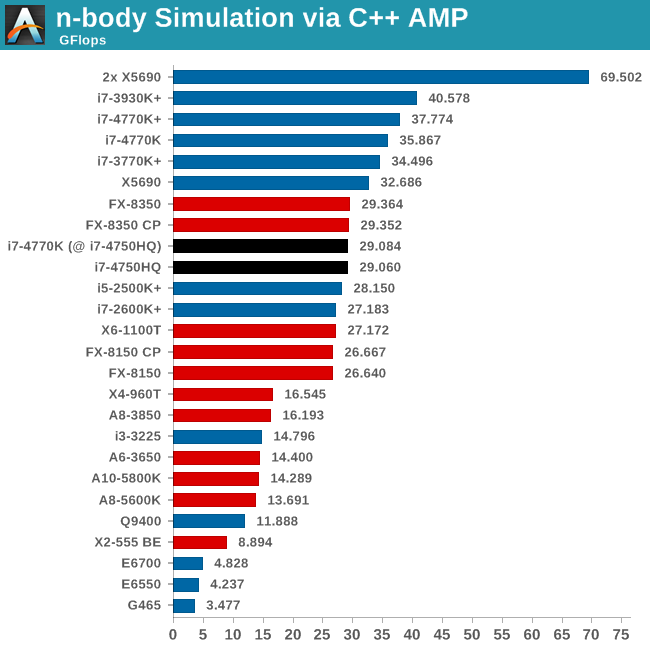
In terms of performance, none of my real world benchmarks seem to touch the eDRAM in any serious way to discern performance against a standard desktop part. If we take WinRAR for example, the ball is in the 4770K court due to the larger L3 cache - perhaps the program detects the level of L3 and changes accordingly, meaning that program developers might now have to cater for the presence of L4. The biggest difference we would is in IGP tests, although this is the difference between GT2 and GT3e. This could result in a big plus for C++ AMP developers who want a mobile system that can push through some compute while on the move.
As a result of my testing, I come away with a slightly different attitude towards Iris Pro in terms of day-to-day benefits. From what I could test, none of my CPU compute saw any benefit, landing the positives on that eDRAM squarely at the feet of IGP, gaming, or if you can program for it, GPU Compute.
As a device, the Clevo W740SU unit (which I believe is still beta but near final) had trackpad issues at times, and the weight could pull it away from being a true ultraportable. It hits the right screen size what I want in a laptop, with 1080p being a minimum in my book. I still want to see what that battery can do – at 1.3 kg the Sony Vaio Pro with the low powered CPU and extra battery slice does 15+ hours, which would still be a big draw if you just want longevity from a Haswell device, along with a PCIe SSD. But the Sony has a locked memory setup, whereas the Clevo is upgradable.
Prices for the Clevo W740SU seem to start around $1000/€1100, with the tray price of the i7-4750HQ listed on the Intel website being $440 of that. Should there be an i7-4950HQ version, the tray price of the CPU goes up to $657.
Many thanks to Intel UK for allowing me time with the system and the opportunity to tour their UK base.


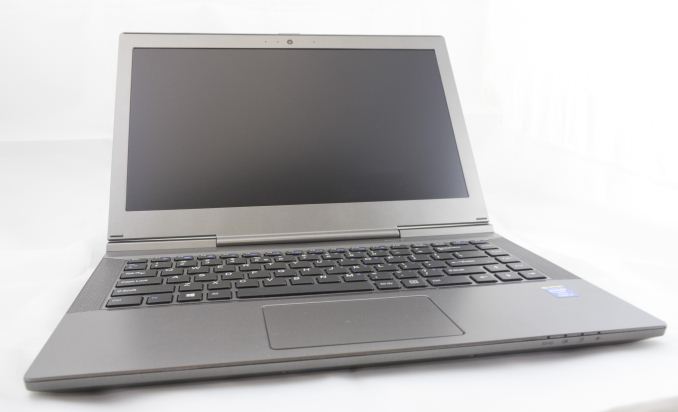
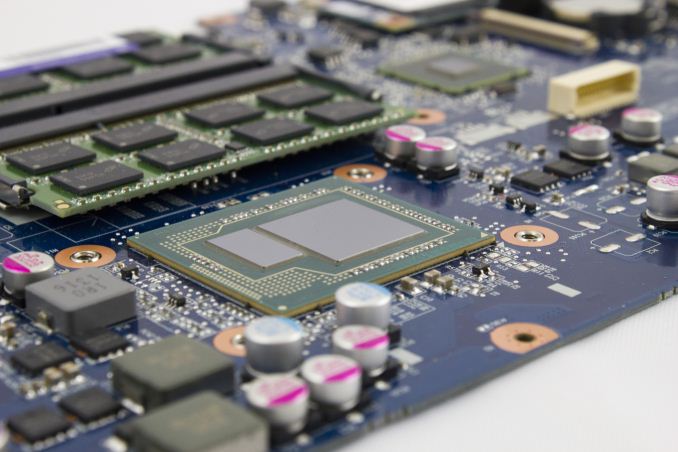
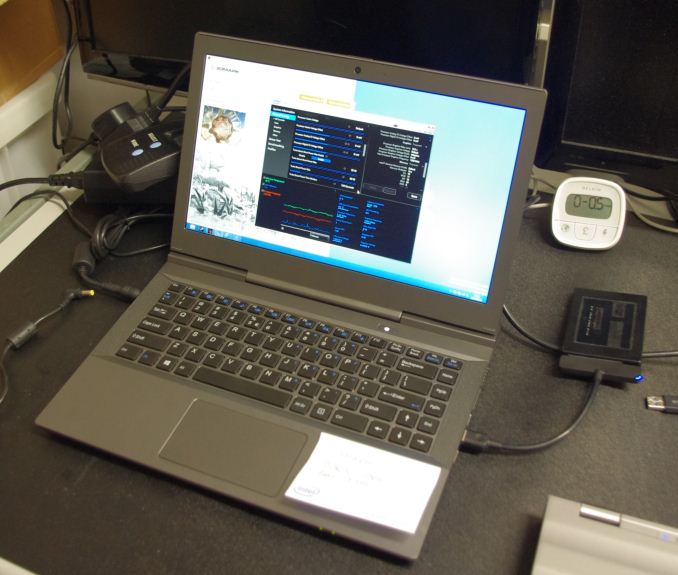
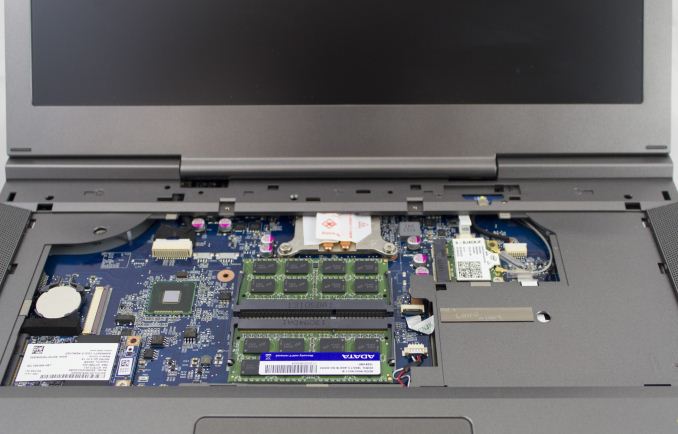
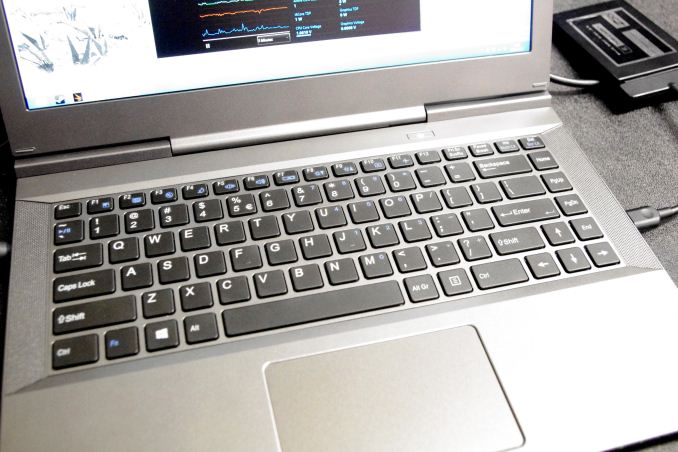

















28 Comments
View All Comments
lkraav - Monday, July 29, 2013 - link
Smartcard reader is another "thing" in my book. Might have to stick with Lenovo and Dell :/Helang - Wednesday, July 31, 2013 - link
Uhh, how to purchase one like that in the U.S.gxtoast - Monday, July 29, 2013 - link
If windows doesn't utilize the L4 cache for much other than for processing graphics, is if a fair assumption that it is probably not going to be the preferred choice for hypervisor use, Ian?andy o - Monday, July 29, 2013 - link
Any idea of power consumption? The biggest promise for me about Iris Pro was lower power consumption due to being only one package. But an <a href="http://translate.google.com.ar/translate?sl=auto&a... review</a> puts it ahead of a Haswell/GT650m by only a handful of W when the GPU is loaded.Death666Angel - Monday, July 29, 2013 - link
Knowing CB, I wouldn't give too much stock on their results. Back when I used to read them (at a time when I didn't know about AT), they tested stuff "at 50% brightness" and compared everything in one chart. Oblivious that "50%" is not an adequate comparison point at all. Unless they have all their testing methodology updated and display on a separate side, I don't see them explaining what their settings are for that test. And just for reference, they use Crysis 3 in the power consumption test, which renders identically on the Iris Pro and the 750M. So in essence, the 750M system uses 10% more power for the same performance in that game. In general, the 750M is 25% faster, but that is done in other games. To get a better sense of the part (even in such a flawed setup with 2 totally different systems), they should have tested at least 2 more settings, one where the 750M is clearly better, one where the Iris Pro is better. As it stands, that test is near worthless in my opinion. One of the reason I quit reading CB. Along with numerous factual errors.andy o - Monday, July 29, 2013 - link
Thanks for the details, I find it tedious to read through a very long google translate. Much appreciated. Hopefully there are second opinions not far behind.Kevin G - Monday, July 29, 2013 - link
WinRAR seems to be an oddball result here. Was the memory speed on the 4770K at 4750HQ speeds also changed to match that platform?So far the L4 cache seems to be good for a few more % increase in IPC. I wonder if using a discrete GPU in addition to CrystalWell would further increase the IPC. The only test I've seen that showed a radical gain was in fluid dynamics. Having said that, I still want CrystalWell in a socket 1150 part with all the features enabled (overclocking, TSX, VT-d, Hyperthreading etc.).
IanCutress - Monday, July 29, 2013 - link
Both were run at 1600 C11; I think that the extra L3 cache of the 4770K helped this result, and by extension suggests that WinRAR adapts its code to the amount of L3 available, and doesn't detect the L4.Until we get a 4770R or similar in a full-on desktop model, we could only speculate at what effect the eDRAM has on anything gaming or compute. As far as I can tell, not many (if any) manufacturers are working on it - the 4x70R chips are ideally placed for AIOs, not desktops, but also would command a lot more expense.
Kevin G - Monday, July 29, 2013 - link
Agreed. It is mostly speculation but I feel that there is a clear interest in the enthusiast community for CrystalWell. However Intel or manufacturers haven't shown much interest in mass market systems using it to date. Case in point is this article where it seems that you had to jump through some hops to get a mere 90 minutes of testing in (which BTW thank you).With regards to the WinRAR test, the extra 2 MB of L3 cache would help the result but it seems like an abnormally large jump. It wouldn't have been my first guess for the performance delta.
rhx123 - Monday, July 29, 2013 - link
No word on any UK releases for this model from any of the resellsers. Rather sad.